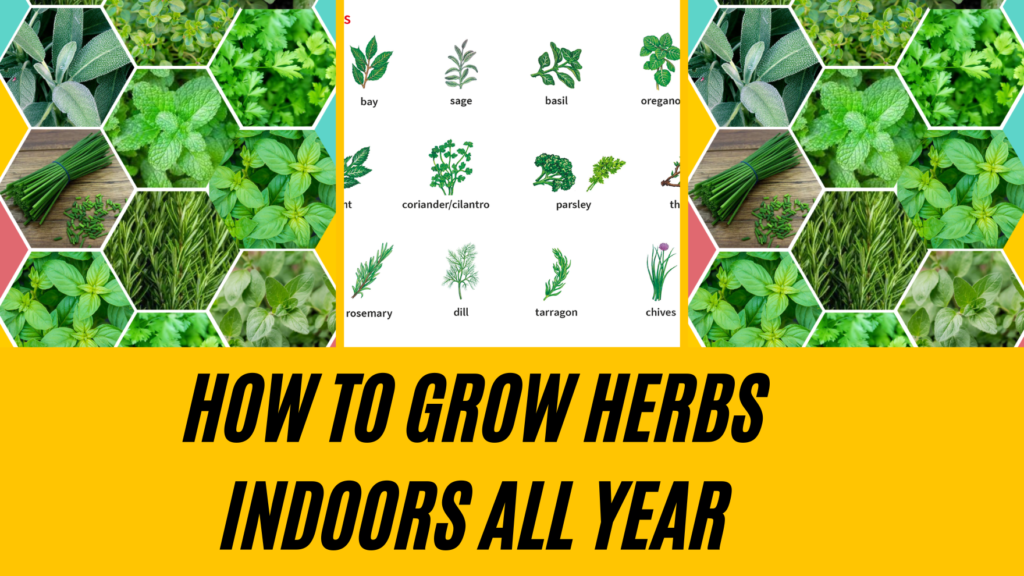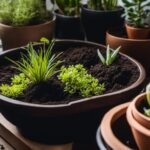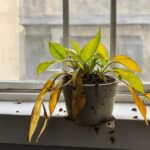How to Grow Herbs Indoors All Year, Top 10 herbs Which can grow in soil or water
Creating an indoor herb garden offers the dual benefits of easy access to fresh herbs and enhancing your living space with delightful scents and vibrant greenery. Discover the art of cultivating herbs indoors, which herbs thrive in indoor conditions, best practices for their care and lighting requirements, and explore creative ideas for your indoor herb garden.

Indoor herb gardening offers a convenient way to keep your kitchen stocked with fresh herbs year-round. Whether you reside in a frosty zone area, have limited indoor space, or lack gardening experience, growing herbs indoors is within your reach.
How to Grow Herbs Indoors
Wondering what you need to start your indoor herb garden? Here are the essential elements:
1. Potting Soil: Proper soil is crucial for herb growth. Mediterranean herbs like thyme, rosemary, oregano, and bay laurel require loose, fast-draining soil. Mix equal parts cactus mix and regular potting soil to create the ideal blend for these herbs. Other herbs, such as basil and mint, thrive in regular potting soil.
2. Container: Your choice of container is significant. Whether you’re starting herbs from seeds or transplanting purchased plants, select a container with a drainage hole at the bottom. Herbs dislike consistently soggy soil, so this feature is a must.
3. Light: Herbs thrive in well-lit environments. If you lack sufficient natural light from a south-facing window, consider full-spectrum grow lights for all your herbs. Position the plants within 12 inches of the bulbs or under the grow light. Begin with 12 to 16 hours of light a day for herbs that require growing light and adjust as needed.
You can also read about Best Grow Lights for Indoor Plants
4. fertilize: Remember to fertilize them with a liquid houseplant fertilizer once or twice a month.
Growing Herbs Indoors: Different Approaches
Growing Herbs Indoors From Transplants
If you’re too impatient to wait for seeds to germinate, you can purchase potted herbs from your local garden center or even your grocery store, often found near the produce section. Perennial herbs like rosemary, oregano, thyme, sage, and bay laurel are the easiest to grow from young plants. As many store-bought herbs are root-bound, it’s essential to gently remove them from their store pots and replant them in a larger, well-drained container with fresh potting soil.
You can read about Indoor Plant Pot Size and Shape Guide For Houseplants on the basis of sizes
Growing Herbs Indoors From Cuttings
Starting herbs from cuttings is another option, especially suitable for basil, mint, and rosemary. Here’s how to do it:
- Snip a 2-4 inch long piece from just below a leaf node on a healthy, mature herb plant.
- Place the cutting in a glass on a sunny windowsill or under a grow light, changing the water every few days to encourage root growth.
- Once you have sufficient roots, transfer the cutting to a container filled with your chosen soil, gently securing the tiny roots.
- Water the cutting and return it to the grow light or sunlight area.
Growing Herbs Indoors From Seed
Growing herbs from seeds is also a viable option, particularly for basil, parsley, cilantro, herb fennel, dill, and lemon balm. Here’s a step-by-step guide:
- Moisturize your seed starting mix until it’s damp (but not dripping wet), and add it to your selected seed starting container.
- Consult the instructions on the back of your seed packet, as each herb has different planting requirements. Some seeds should be planted 1/4-inch deep, while others need to be sown on the surface. Place one seed in each container or cell.
- Mist the surface of the seed starting mix to with the water in the seed.
- Enhance seed germination by using a humidity dome and placing the container on top of a heat mat.
- Position your seed starting setup under your chosen grow light or near a sunny windowsill. Once the seeds have germinated, remove the humidity dome for proper air circulation and turn off the heat mat.
Top 10 Herbs Which can Grow in Water All Year
Here is a list of the top 10 herbs that can be grown in water all year:
- Basil: Basil is an excellent choice for water propagation and can thrive year-round with proper care.
- Mint: Various mint varieties, such as peppermint and spearmint, grow well in water, providing fresh leaves continuously.
- Cilantro (Coriander): Cilantro can be grown in water, ensuring a steady supply of its fragrant leaves.
- Parsley: Both flat-leaf (Italian) and curly parsley can be cultivated in water, offering a continuous source of this versatile herb.
- Chives: Chives are easy to grow in water, and they add a mild onion flavor to your dishes year-round.
- Oregano: Oregano cuttings can thrive in water, allowing you to enjoy its savory flavor whenever you need it.
- Lemon Balm: Lemon balm can be propagated in water, providing a lemony aroma and flavor to your recipes.
- Sage: Sage can grow in water, offering its earthy, aromatic leaves all year.
- Rosemary: Rosemary cuttings can be cultivated in water, providing that distinct piney taste for your dishes.
- Thyme: Thyme can be rooted in water and maintained year-round, offering a subtle, earthy flavor.
Remember to change the water regularly and ensure that the herbs receive adequate sunlight to thrive indoors.
Top 10 Herbs Which can Grow in Soil All Year
Here is a list of the top 10 herbs that can be grown in soil indoors year-round:
- Basil: Basil is a popular herb that thrives in indoor containers. It requires ample sunlight and well-draining soil.
- Mint: Mint, such as spearmint or peppermint, is a hardy herb that grows well in pots. It prefers consistently moist soil and indirect sunlight.
- Chives: Chives are easy to grow indoors and can provide a mild onion flavor. They prefer well-drained soil and moderate sunlight.
- Parsley: Both flat-leaf (Italian) and curly parsley varieties can be grown indoors. They need well-drained soil and indirect light.
- Cilantro (Coriander): Cilantro can be cultivated in indoor containers with well-draining soil. Ensure it receives enough sunlight and moderate temperatures.
- Rosemary: Rosemary is a fragrant herb that does well indoors. It requires well-drained soil and direct sunlight.
- Thyme: Thyme is a versatile herb that can be grown in pots indoors. It needs well-drained soil and moderate sunlight.
- Oregano: Oregano is a hardy herb suitable for indoor cultivation. Use well-draining soil and provide it with direct or indirect sunlight.
- Sage: Sage can be successfully grown indoors in well-drained soil with direct sunlight.
- Lavender: Lavender is a fragrant herb that can thrive indoors. Use well-draining soil and ensure it receives plenty of sunlight.
To keep these herbs healthy year-round, make sure they are placed in the right type of soil, which is explained above article and receive the appropriate amount of sunlight, and are watered according to their specific needs.




